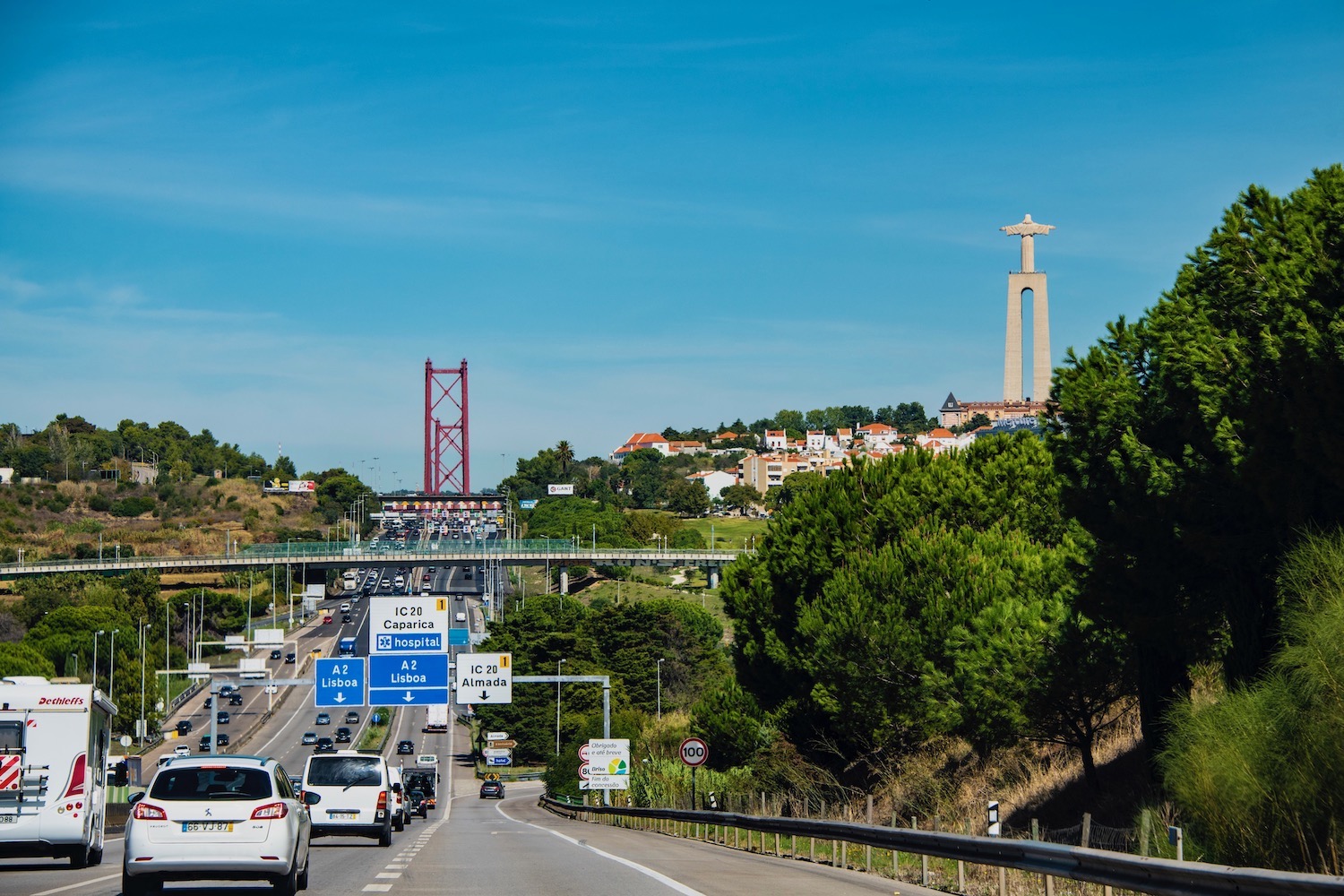Portugal is one of my favorite countries in Europe for a whole host of reasons. Among them? It’s a relatively small country—and traveling there is extremely straightforward.
Traveling around Portugal is also relatively simple, although what works in one place doesn’t necessarily work in others. Excellent public transportation in cities like Lisbon and Porto, for example, isn’t comparable to what you find in the Azores islands or even in the Algarve region.
The good news? Once you’ve been traveling for a few days, sifting through the various ways of getting around in Portugal will become second nature to you. The better news? Reading this article will give you a huge head start.
Portugal is Bigger Than It Looks on the Map
Part of what makes getting around Portugal slightly more complicated than it should be? Portugal is bigger than it looks, which means distances are greater than they appear. It surprises many people to learn, for example, that the “high-speed” train between Lisbon and Porto (which seem to be very close to one another) takes a whopping three hours of travel time.
Then, there’s the fact that there are so many ways to navigate Portugal. This is true both in terms of specific routings (there are buses from Porto to Lisbon, in addition to the trains), as well as quirks within individual regions. A lack of public transport within the Algarve region for example, means that all but the most flexible travelers are better off renting cars.
The Most Popular Ways to Get Around in Portugal
On foot
Major Portuguese cities like Lisbon and Porto have extremely walkable city centers. Well, so long as you aren’t intimidated by hills, or unable to walk up and down them due to physical constraints. Walking is my favorite way to see a city in general, so I try to explore Portugal’s cities using my own two feet wherever possible.
Bus
As I previewed in an earlier paragraph, buses are another popular way to get around Portugal. In some instances, you’ll take a bus within a city, such as from Lisbon’s Alfama district over to Belém. In other instances, you’ll take an intercity bus, whether between Lisbon and Porto or Aveiro, or around São Miguel Island in the Azores.
Metro and urban rail
It might surprise you to know, but Lisbon is home to a four-lined metro system, which is extremely easy to use and is also color-coded. Porto, on the other hand, is home to several light rail lines. Both cities also have urban and commuter trains that go to nearby cities, such as Sintra and Braga, respectively.
TIP: While the americano streetcars in Lisbon are picturesque and iconic, they’re not practical these days, given the huge numbers of tourists who queue to ride them. The next-closest substitute are the “tuk-tuks” that have taken to Lisbon’s streets since the pandemic, although I find these tacky.
Long-distance trains
Although I mentioned a “high speed” train earlier, the reality is that the Alfa Pendular (the closest thing to high-speed rail the country has) is not an extremely fast way to get around in Portugal. Even along the flagship routes like Lisbon to Porto or Faro, there are so many stops that the train can never really achieve full speed.
Domestic flights
Not surprisingly, domestic flights in Portugal are useful primarily when flying between the Portuguese mainland and islands such as the aforementioned Azores and Madeira. However, there are situations where flying from Faro or Porto to Lisbon (or vice-versa) might make sense, namely if you’re connecting to or from a long-haul flight.
What to Know About Renting a Car in Portugal
I’ve decided to make a separate section about cal rental in Portugal, because I consider it to be a distinct discussion. After all, renting a car is completely off the table for many travelers, be it due to concerns about cost, or because they lack the documents necessary to drive legally in Portugal. If you’re a part of this group, then these couple of paragraphs won’t really benefit you, I’m afraid!
There are several areas in Portugal where renting a car is helpful. In the Douro Valley, for example, it enables you to explore multiple days at your own pace, instead of being at the mercy of overpriced taxis and tours. In some places, on the other hand, a car is nothing short of necessary. This is especially true in the Azores, where with the exception of São Miguel Island, buses are unreliable, even where they exist.

Other FAQ About Getting Around Portugal
How do tourists get around in Portugal?
Most tourists in Portugal get around using some combination of public transportation and their own two feet—Portugal’s major cities are extremely walkable. However, some tourists also rent cars, particularly in regions like the Algarve, Douro Valley, Madeira and the Azores, where transit options leave something to be desired.
Can I travel around Portugal without a car?
You can explore most of Portugal’s major cities without using a car. However, if you want to explore more rural parts of the country like the Algarve region or the Azores Islands, it’s really better to have your own set of wheels. Otherwise, you’ll be at the mercy of inadequate public transport or overpriced taxis and tours.
What is the best way to travel through Portugal?
The best way to travel through Portugal depends upon your Portugal itinerary. For example, if you plan to focus primarily on the cities of Porto and Lisbon, you can get by using a combination of trains, metros, trams, buses and your own two feet. If, on the other hand, you want to explore the Douro Valley, you’ll either need to rent your own car, or book a private wine tour.
The Bottom Line
Getting around in Portugal can be confusing, but I promise you’ll get the hang of it. In some cases, taking a train makes the most sense, whether that’s a regional one from Lisbon to the day trip hub of Sintra, or a long-distance, and (relatively) high-speed one up to Porto. In other cases, you need to fly (such as from the Portuguese mainland to Madeira or the Azores) or rent a car, as is usually necessary if you want to explore somewhere like the Douro Valley wine region at your own pace. Need personalized help assembling your Portugal itinerary? I hope you’ll consider hiring me to plan it.
